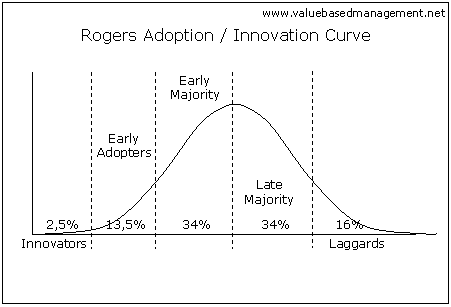Social Media and the Academy: research life cycles, adoption curves and ‘executable journals’
5 Aug, 11 | by BMJ
I recently attended the Fifth Bloomsbury Conference on E-Publishing and E-Publications, entitled ‘Social Media and the Academy: Enhancing and enabling scholarly communication’. There were a variety of talks from scientists, publishers, librarians and archivists; all assessing the role of social media in professional scholarly lives and predicting future trends.
Research life cycles and adoption curves
Professor Ian Rowlands presented the results of a CIBER study that focused on whether social media are impacting on scholarly processes and how influential age and other factors are in shaping the demand for social media. The research life cycle was shown as an 8 stage process beginning with identifying opportunities, finding collaborators, securing support, reviewing literature, collecting research data, analysing research data, disseminating findings and managing the research process. Whilst librarians and publishers tend to get involved towards the final phase of dissemination, Ian suggested that there is a broader role to be played throughout the cycle. His advice was that publishers need to get involved earlier in the scholarly workflow. Microblogging is seen as useful for opportunities, collaboration, literature review, collecting data and, of course, for dissemination. Most people use social media in only one, two or three categories of social media. There are some strong pairings – blogging and microblogging; microblogging and social networking; microblogging and social tagging.
His research looked at the uptake of social media across age ranges and different stages of career. He found that adoption is not really about age but rather “Rogers’ adoption curve”. This states that a new technology is taken up at different speeds by different types of people, ranging from Innovators to Laggards. The key driver isn’t age but a person’s propensity to be in and part of the ‘scene’. This is important because it suggests that the dam is about to burst (the early majority will be following the early adopters).

Comments from the survey on social media use in research were mixed. Whilst some respondents were enthusiastic, many were reasonably wary. There was also a distinction in how useful social media were at different points in the research cycle. The modal responses saw social media as very useful for identifying opportunities, finding collaborating, collecting data, disseminating and managing research but less so for analysing research data or securing support. There was relatively little differentiation between the disciplines but the group with the highest level of enthusiasm for social media was biosciences and health.
Executable journals
Elsevier recently announced the winners of their Executable Paper Grand Challenge, which, according to Dr Peter Sloot (Editor in Chief of The Journal of Computational Science), was “created with a view to the future of scholarly communication, which increasingly integrates the experiment and its presentation.” He continues that, “the vision is a future where research is executable on all levels, including data, results, and methodology.” Rather than this concept remaining in the realm of computer scientists, however, Professor David De Roure is introducing the concept to scholarly publishing in the form of ‘executable journals’.
In a recent blog post, De Roure proffered that “instead of saying that publishers are obsolete (as some do), and then going away building complicated tools and infrastructures with uncertain sustainability models, how about the publisher as part of the provision and the executable paper as the ultimate user-centric interface to the new tooling of research?” The basic concept is that the platform hosts the data, which can be continuously changed and reinterpreted to draw new conclusions. This (very new) idea is to be discussed at the upcoming Future of Research Communication so watch this space.